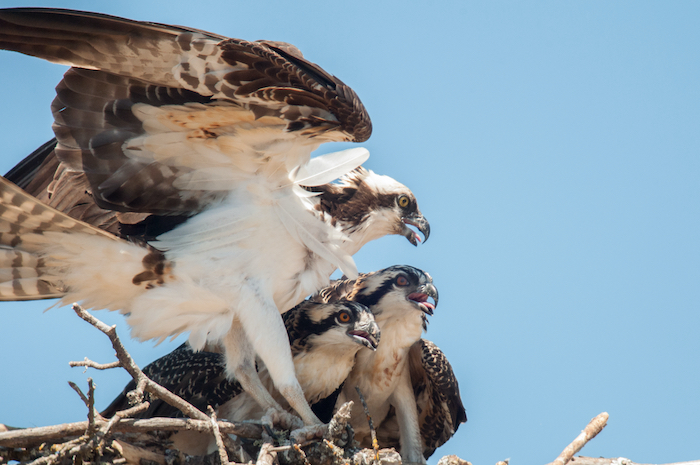
Osprey Adult with Nestlings Underwing
The Osprey, aka fish hawk, is a bird of prey with some very special adaptations giving them their own taxonomic genus, Pandion and family, Pandionidae. Their outer toes, like those of owls, are reversible, allowing them to grasp their prey with two toes in front and two behind. Osprey toes also have sharp spicules on their lower surface allowing them to grasp slippery fish. They are the only raptor that plunge-dives feet first for live fish, which account for over 99% of their diet.
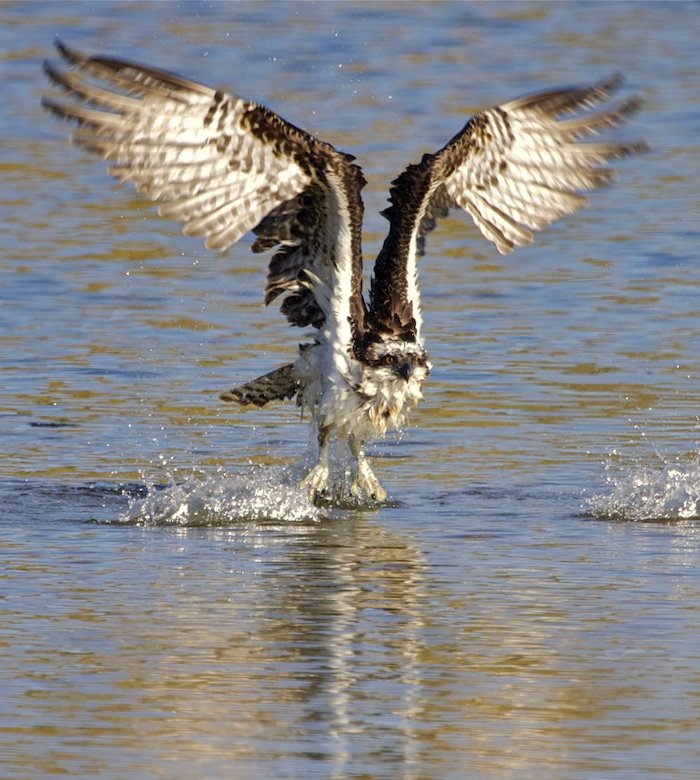
Osprey Diving For Fish courtesy of Teddy Llovet, Flickr Creative Commons
Like the Bald Eagle, Osprey populations suffered major declines largely due to the use of DDT in the 1950s and 60s. Osprey studies provided key evidence in court to block continued use of persistent pesticides, and Osprey populations recovered rapidly thereafter. Although small pockets of contamination remain, their historic range has greatly expanded and many populations in Canada and the United States now exceed historical numbers, owing to a cleaner environment, increasingly available artificial nest sites, and this bird’s ability to tolerate human activity near its nests. Now Osprey are the second most widely distributed raptor species, after the Peregrine Falcon, found in temperate and tropical regions of all continents, except Antarctica.
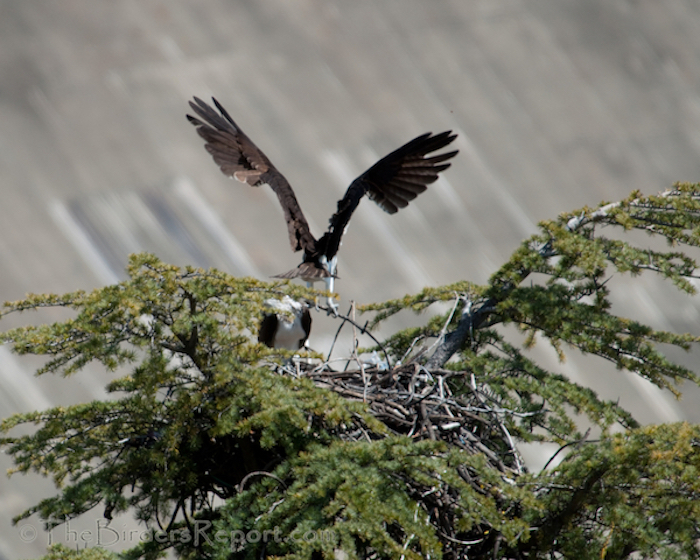
Osprey Building Nest at Shasta Dam
Being a predominately fish eating raptor, they nest near fresh or salt water, building large stick nests historically atop trees, rocky cliffs, and promontories. However, predation, loss of trees, and development of shorelines have been driving forces of Osprey shifting their nesting preferences to an array of artificial sites like channel markers in harbors and busy waterways; towers for radio, cell phone, and utility lines; and platforms erected exclusively for the species.
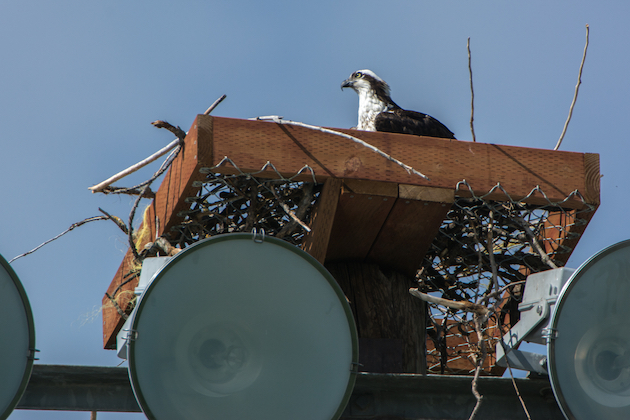
Osprey On Nest Platform
Shasta County is blessed, having many nesting locations for Osprey, several of them being man-made platforms. There was a pair of Osprey that built a nest atop the soccer field lights at Anderson River Park for many years. Unfortunately, the lamps in that light array had to be replaced every so often which usually caused damage to the nest. Wintu Audubon Society and the late Karen Scheuermann, wildlife rehabber of Tehama Wild Care, coordinated with the City of Anderson to install a permanent nesting platform atop that light stand to allow the Osprey to nest there in the future without being disturbed.
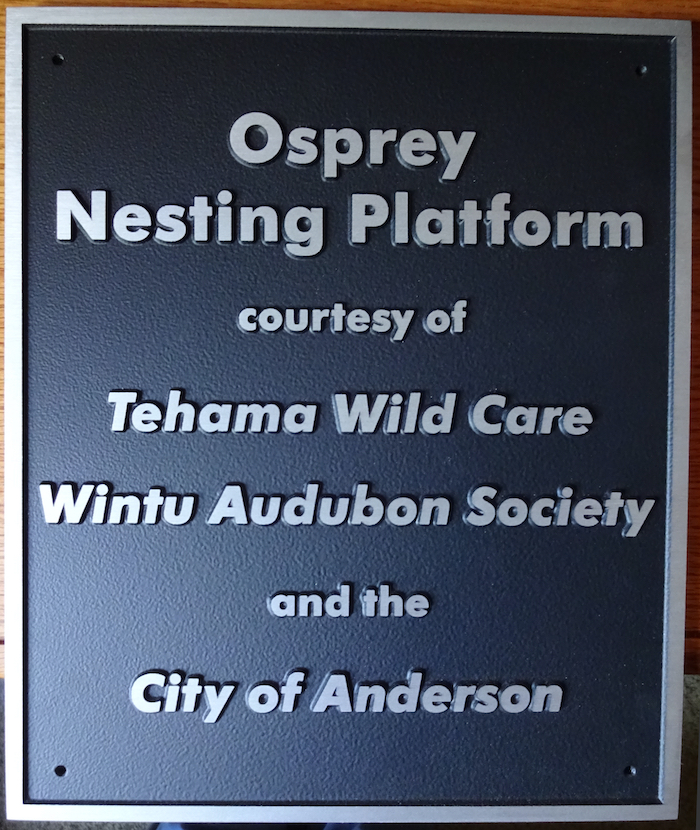
Osprey are usually monogamous and mate for life. They also show high fidelity to successful nest sights. We are pleased to announce that a pair of Osprey have indeed accepted our nest platform at the Anderson River Park soccer field and are currently raising two young! In the coming weeks we will be mounting a plague on the light pole to commemorate this coordinated and successful effort to advance the continued breeding success of this beautiful raptor.
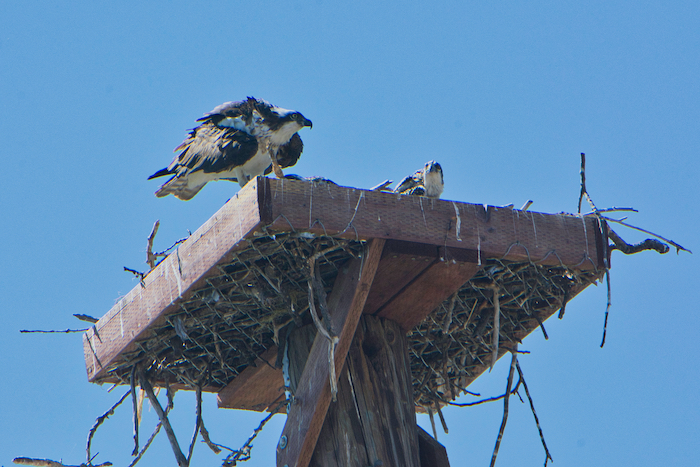
Osprey Adult with Nestling at Anderson River Park, June 17, 2021
